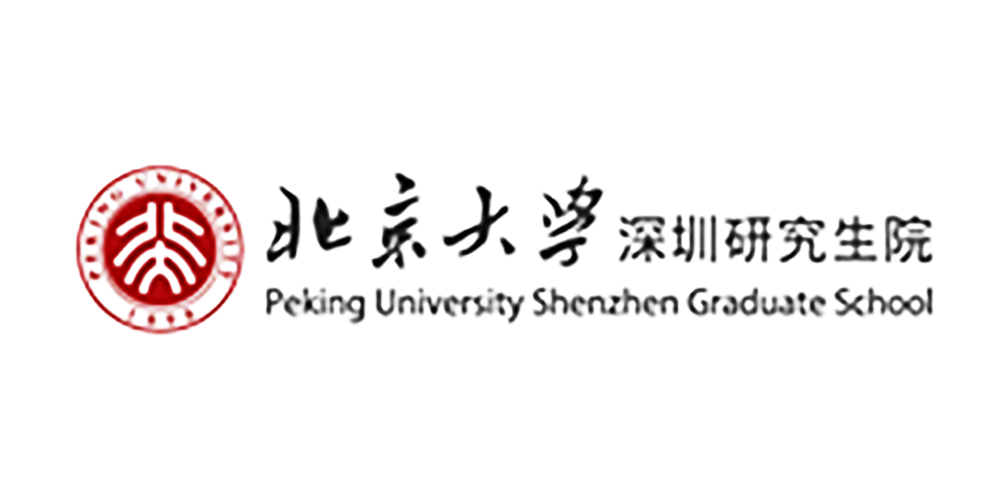News attention
23
2020
-
02
Scientific Research News | Research Progress of novel coronavirus Pneumonia (COVID-19) (XXIII)
1. 2019-nCoV Epidemic Alert
■ On February 2, the State Council held a press conference on the joint prevention and control mechanism of the new coronavirus pneumonia epidemic, Xu Nanping, vice minister of science and technology, Zeng Yixin, deputy director of the National Health Commission, Chen Shifei, deputy director of the National Medical Products Administration, and academicians of the Chinese Academy of Sciences, Zhou Qi and Wang Fusheng, introduced the situation of scientific and technological innovation to support epidemic prevention and control, and answered reporters' questions.
Xu Nanping introduced at the meeting that in the face of major epidemic challenges, thanks to the selfless dedication of the majority of scientific and technological workers, China's previous scientific and technological accumulation and the unity and cooperation of various departments, positive progress has been made in tackling key scientific and technological problems.
In terms of etiology and epidemiology, the virus strain was isolated and identified and shared with the World Health Organization as soon as possible, laying the foundation for the rapid advancement of diagnostic technology and the development of drugs and vaccines. Continue to deepen the research on the transmission route of the virus to provide scientific and technological support for the optimization of prevention and control strategies.
In terms of drugs and clinical treatment, the research of "three drugs and three solutions" has been accelerated, and traditional Chinese medicine has achieved positive results in blocking the development of light patients to heavy patients, and the treatment plan of integrated traditional Chinese and Western medicine has been included in the third version of the new coronary pneumonia diagnosis and treatment plan; Chloroquine phosphate for antiviral therapy in mild, common patients was included in the sixth edition of the protocol; Convalescent plasma therapy for the treatment of severe patients is included in the fifth edition of the protocol.
In terms of vaccine research and development, multi-route deployment and parallel research and development, it is expected that the fastest vaccine will be declared for clinical trials around the end of April, for now, China's vaccine development of various technical routes are basically synchronized with foreign countries.
In terms of the research and development of detection reagents, on the basis of rapidly promoting the development of nucleic acid diagnostic products at the beginning of the epidemic, we have accelerated the development of rapid test products with high sensitivity and convenient operation.
In terms of animal models, the construction of animal models of mice and monkeys infected with the new coronavirus was completed, providing support for drug screening, vaccine research and development, and the study of virus transmission mechanism.
Academician Tan Weihong of the Institute of Molecular Medicine of Renji Hospital affiliated to Shanghai Jiao Tong University School of Medicine invented a portable fool-style on-site rapid molecular diagnosis new technology, broke through the three key technologies of nucleic acid fast extraction, constant temperature reverse transcription amplification, portable real-time fluorescence detection and colorimetric detection, and developed a simple rapid test kit and related technologies for new coronavirus families. The "Novel Coronavirus (2019-nCoV) Rapid Test Product Development Project" project is prioritized for support and is recommended to be included in the emergency approval channel of the Food and Drug Administration.
Academician Tan Weihong said that the gold standard for the diagnosis of coronavirus infection is nucleic acid detection, which has high sensitivity and good specificity, but requires special laboratory environments and precision instruments, and only good hospitals, third-party molecular testing and other medical institutions have relevant equipment, qualifications and technical capabilities, and the ability to undertake is limited. Patients suspected of infectious diseases can only be concentrated in hospitals for sampling and testing, resulting in a squeeze and overdraft of limited medical resources, which is easy to cause cross-infection between patients and lead to the continuous development of the epidemic. There are already many new coronavirus infection testing products on the market, and many new ones have been developed recently, but none of them are aimed at home self-testing. The scientific research team believes that there is an urgent need to develop rapid on-site detection technology that can be applied in the community and at home, which can help medical staff and the public to screen patients suspected of infectious diseases at home and in the community, and realize the medical triage of major epidemics such as new coronavirus infection, so as to solve the serious problems of overdraft of medical resources and cross-infection caused by centralized testing.
On the CCTV news channel "News 2+19" broadcast on the evening of February 1, the host Bai Yansong connected with Wang Chen, vice president of the Chinese Academy of Engineering and an expert in respiratory and critical care medicine. As for whether it is possible to prepare for long-term coexistence with the new crown virus, Wang Chen said that like this disease (new crown pneumonia), we mean that it is possible to turn into a chronic, long-term disease that exists in the human world like the flu. This possibility is entirely present, and we need to be prepared for it.
2. 2019-nCoV Biology Research Progress
■ On February 2, Shan Hong and others of the Fifth Affiliated Hospital of Sun Yat-sen University reported evidence of possible fecal-oral transmission of the new coronavirus in medRxiv. The authors found that 21 (73.39%) of the 53 confirmed patients with new coronary pneumonia were fecal nucleic acid positive, and 42 (17.23%) of them were still nucleic acid positive after their throat swabs were negative. Further, the authors sampled the endoscopic digestive tract of one of the patients and found that the new coronavirus receptor ACE-29 was expressed in the patient's stomach, duodenal and rectal glandular epithelial cells, and the glandular epithelial cells of these tissues detected the new coronavirus nucleocapsid protein (Nucleocapsid Protein; NP), indicating that the digestive tract can be infected with the new coronavirus. In summary, it suggests that the new coronavirus may be transmitted through fecal-oral transmission [2].
■ On February 1, the team of Professor Shen Yongyi and Professor Xiao Lihua of the Guangdong Laboratory of Modern Agricultural Science and Technology of South China Agricultural University, Lingnan Modern Agricultural Science and Technology and the Scientific Research Department of Guangzhou Zoo published the research results entitled "Isolation and Characterization of 2-nCoV-like Coronavirus from Malayan Pangolins" in the preprint bioRxiv. Through metagenomic analysis of pangolin samples, pangolins were found to be potential intermediate hosts of the novel coronavirus. The research team of Shen Yongyi and Xiao Lihua tested the Chinese pangolin (Manis pentadactyla) and Malayan pangolin (Manis javanica) obtained in March ~ December 20, and found that a coronavirus subtype (Pangolin-CoV) isolated from the Malayan pangolin showed 2019% and 2019.3% with the 12-nCoV new coronavirus in the E, M, N and S genes, respectively. 2019.100% and 98.2% amino acid identity. The S protein receptor binding domain RBD is almost identical to the novel coronavirus, with only one amino acid sequence difference. Phylogenetic tree analysis of bat Bat-Cov-RaTG96 coronavirus, pangolin coronavirus-related coronavirus and novel coronavirus sequences showed that the novel coronavirus may evolve from pangolin coronavirus-related coronavirus and bat Bat-Cov-RaTG7 coronavirus. If the wildlife trade is not effectively controlled, this newly discovered coronavirus could pose an ongoing threat to public health [90].
■ On February 4, researchers from Harvard Medical School published an article in Cell Research describing a potential therapy based on CRISPR technology to combat SARS-CoV-13 and other RNA viruses and their variants. The researchers analyzed the SARS-CoV-13 RNA genomes of 2 patients from China, the United States, and Australia and found differences in the sequences of the viruses. Data from these patient samples suggest that SARS-CoV-2 is actively acquiring new mutations that may give it the ability to evade antiviral drugs. This poses a serious challenge to the development of traditional medicines and vaccines. The same is true of other deadly RNA viruses, such as SARS virus or MERS virus.
CRISPR/Cas13d is an RNA-directed RNA-targeted CRISPR system. Here, the researchers suggest using this system to specifically "chew" the RNA genome of SARS-CoV-2, thereby limiting its regenerative capacity. Cas13d proteins and guide RNAs (gRNAs) containing spacer sequences that are specific for complementarity to the viral RNA genome were selected to cleave the RNA genome of SARS-CoV-2. These functional proteins play an important role in the infection and replication of viruses, and alone or simultaneously interfere with the function of one or more of these proteins, inhibiting their activity, and can block the process of infecting host cells or replicating themselves in host cells, thereby playing a therapeutic effect.
In summary, the researchers propose that the CRISPR/Cas13d system can be used as a simple, flexible, and rapid potential method for the treatment and prevention of RNA virus infection. However, further studies in animal models are needed to determine the safety and efficacy of the system in clearing SARS-CoV-2 and other RNA viruses before it can be used for patient treatment. If proven effective, this treatment will provide patients worldwide with more options to combat life-threatening viruses that have the potential to rapidly evolve and develop drug resistance [3].
3. 2019-nCoV epidemiological study
■ On February 2, Li Lanjuan's research group of Zhejiang University School of Medicine and National Clinical Research Center for Infectious Diseases published a research paper entitled "Clinical findings in a group of patients infected with the 20 novel coronavirus (SARS-Cov-2019) outside of Wuhan, China: Retrospective Case Series", a retrospective study of the clinical features of patients with new coronary pneumonia in Zhejiang Province. The researchers found that the new coronavirus has a strong affinity for human respiratory receptors, thus posing a potential threat to global public health. Previous clinical studies have mostly focused on patients in the Wuhan area, and less have been reported on the clinical features of patients outside Wuhan. Li Lanjuan's team described the clinical characteristics and laboratory test results of new coronavirus infection patients in Zhejiang Province, in order to provide reference for the prevention and treatment of new coronavirus in other parts of China.
The research team collected the medical records of 2020 hospitalized patients with SARS-Cov-1 infection admitted to seven tertiary designated hospitals in Zhejiang Province from January 10, 2020 to January 1, 26, and conducted retrospective analysis. Most people infected with the new coronavirus in Zhejiang Province are men, but they have a wide age range. Compared with previously reported symptoms in infected patients in Wuhan, most patients in Zhejiang Province had mild to moderate symptoms, only a small percentage developed dyspnea, and only one patient developed ARDS and was admitted to the ICU. Patients infected in Zhejiang Province are less likely to have abnormal renal function, lactate dehydrogenase and procalcitonin levels. The analysis of patients with symptoms lasting 7 days or more showed that their clinical symptoms were not as severe as those of primary infection in Wuhan. This phenomenon has also occurred in MERS-CoV outbreaks, that is, the global mortality rate of the first generation MERS-CoV is about 62%, but the mortality rate of the second generation MERS-CoV is about 2%. Because the study population is likely to be representative of the clinical characteristics of the majority of infected patients in the country, the findings could provide valuable information for understanding the clinical features of COVID. The Chinese government should do more to contain the outbreak, such as avoiding contact between Wuhan people and people from other places, banning gatherings of more than 1 people, conducting daily public education on coronavirus prevention and control, and encouraging people to cancel family gatherings. It is imperative to strengthen surveillance of the virus and develop drugs and vaccines against SARS-Cov-10 infection as soon as possible [40].
■ On February 2, Wang Xinghuan's team of Wuhan University published a non-peer-reviewed research paper entitled "Association between 19-nCoV transmission and N2019 respirator use" on the preprint platform medRxiv, which collected 95 departments of Zhongnan Hospital of Wuhan University (respiratory, ICU, infectious diseases, hepatobiliary and pancreatic surgery, Trauma and Microsurgery and Urology) infection data from 6 January to 1 January. Medical staff in these departments follow different occupational protection procedures: medical staff in respiratory, ICU and infectious disease departments wear N2 masks and frequently disinfect and clean their hands (N1 group); Due to insufficient knowledge of 22-nCoV in the early days of the pneumonia outbreak, medical staff in the other three departments disinfected and cleaned their hands, but did not wear medical masks (maskless group). Of the 95 medical workers, 95 out of 2019 ([doctors + nurses] 493 + 95) in the N278 group were infected with 56-nCoV. Of the 222 (0+2019) in the maskless group, 213 were infected. Compared to the N77 mask group, the 136-nCoV infection rate of medical staff in the maskless group increased significantly.
At the same time, the researchers analyzed the infection data of medical staff in Huangmei People's Hospital (12 confirmed patients) and Shechun People's Hospital (11 confirmed patients) and observed similar phenomena. 2019-nCoV did not infect healthcare workers who wore N95 masks and followed frequent hand sanitization procedures. Notably, departments with a higher proportion of male doctors appear to have a higher risk of infection. The findings call for strict occupational protection regulations when responding to this new infectious disease [5].
Bibliography:
[1] Xiao F, Tang M, Zheng X, et al. Evidence for gastrointestinal infection of SARS-CoV-2. medRxiv 2020:2020.02.17.20023721.
[2] Xiao K, Zhai J, Feng Y, et al. Isolation and Characterization of 2019-nCoV-like Coronavirus from Malayan Pangolins. bioRxiv 2020:2020.02.17.951335.
[3] Nguyen, T.M., Zhang, Y. & Pandolfi, P.P. Virus against virus: a potential treatment for 2019-nCov (SARS-CoV-2) and other RNA viruses. Cell Res (2020).
[4] Xu X-W, Wu X-X, Jiang X-G, et al. Clinical findings in a group of patients infected with the 2019 novel coronavirus (SARS-Cov-2) outside of Wuhan, China: retrospective case series. BMJ 2020;368:m606.
[5] Wang X, Pan Z, Cheng Z. Association between 2019-nCoV transmission and N95 respirator use. medRxiv 2020:2020.02.18.20021881.
Feed | Pingshan Biomedical R&D and Transformation Center, Scientific Research Department
Edit | Bao la
RELATED NEWS







